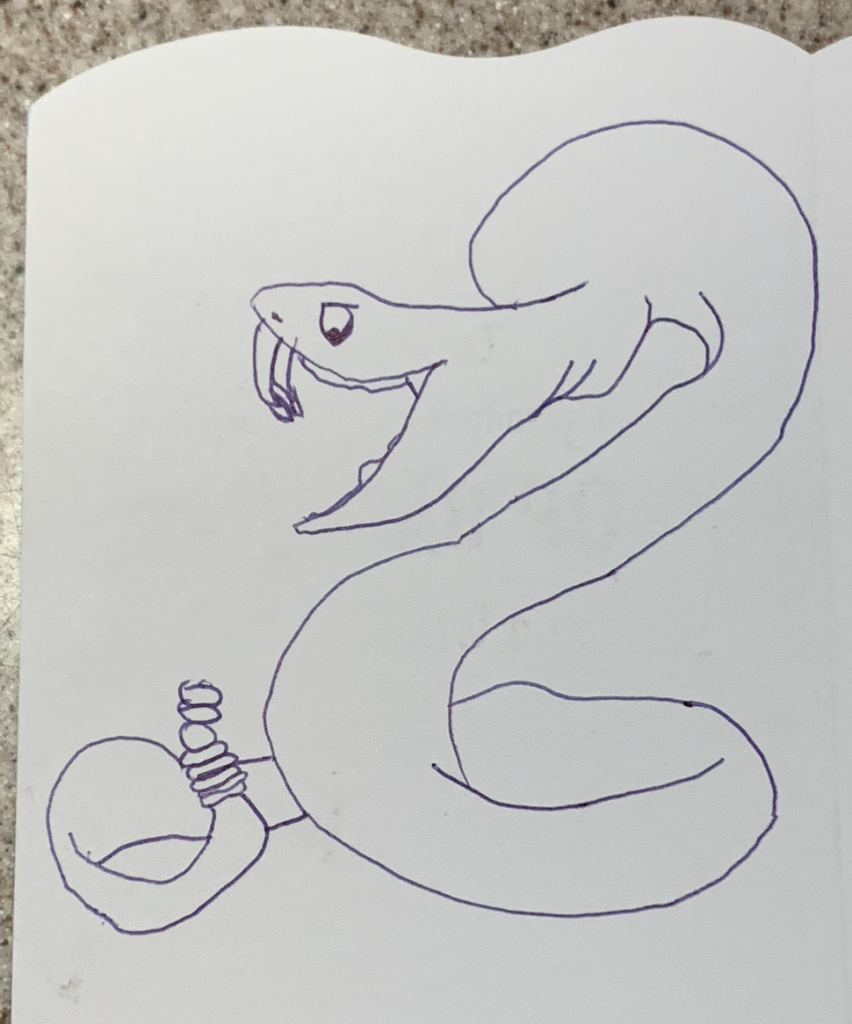By Dan Weisz
One morning in early June, I was surprised to notice a “new” gray rock near the bird bath in the back yard. Upon closer inspection, I realized this wasn’t just a rock!!
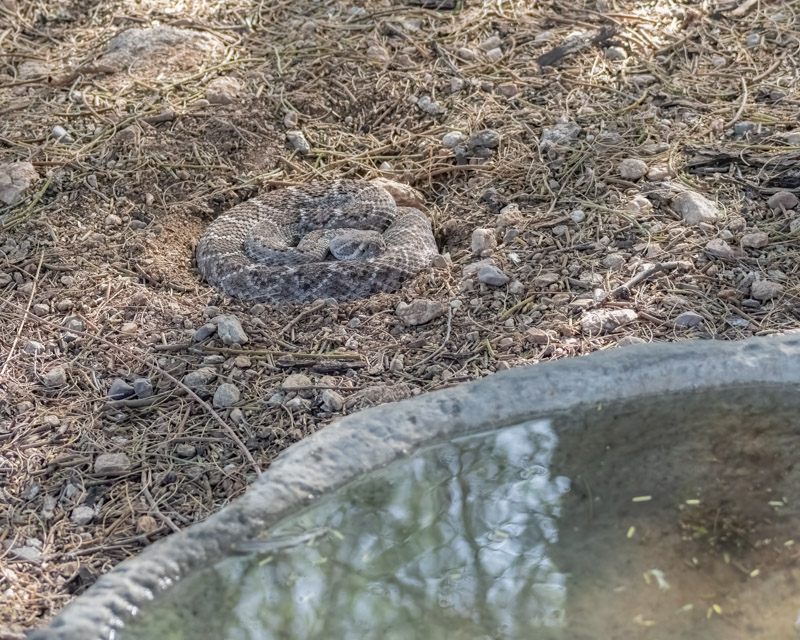
This was a Diamondback Rattlesnake curled up. The gray diamonds on its back are outlined by white scales. At first I thought the snake might just be resting but then I realized it was in its “ambush” position, waiting for prey to wander nearby. If you look closely, you can see that the rattler has ‘cratered’ into the ground, making a smooth and shallow bowl to wait in. This lowers the snake’s profile while it awaits prey to ambush.
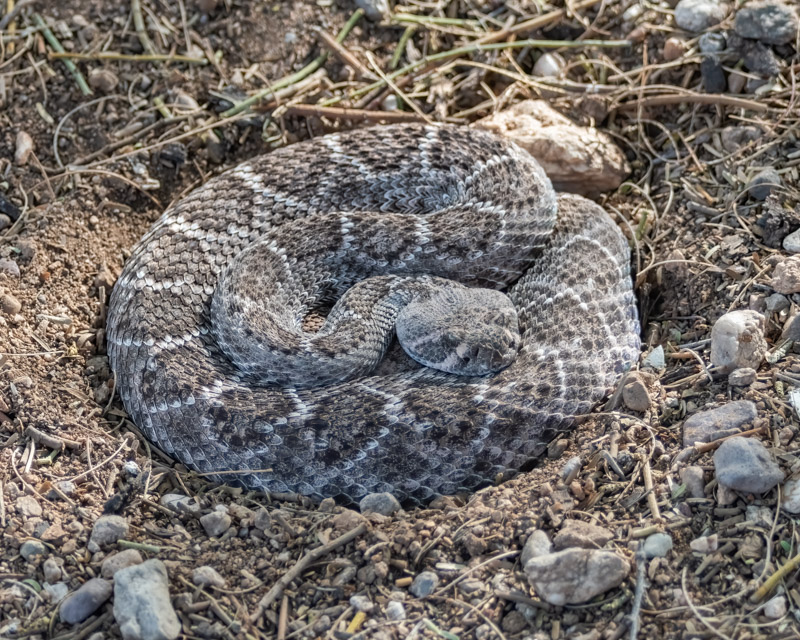
I moved to the side and squatted down to get a closer look. It was hard to tell whether or not the rattler was awake when I looked at it from above. From the angle below, clearly the snake’s eye is open. I was at a safe distance. A telephoto lens and cropping the image tightly during processing brings us this close-up of the snake.

After watching it for a bit, the snake never moved nor did it flicker its tongue. I thought I’d wait inside the house and from the kitchen continued looking out in the yard. The snake was hidden from view behind the water feature but I waited for it to begin to move. After a while, I noticed that quite a few birds were standing in the yard, just standing. Sparrows, quail, and doves were standing and staring towards where the snake was hidden from my view. It looked strange so I got up quickly and went outside to see what they were looking at. I discovered I had missed a special moment.
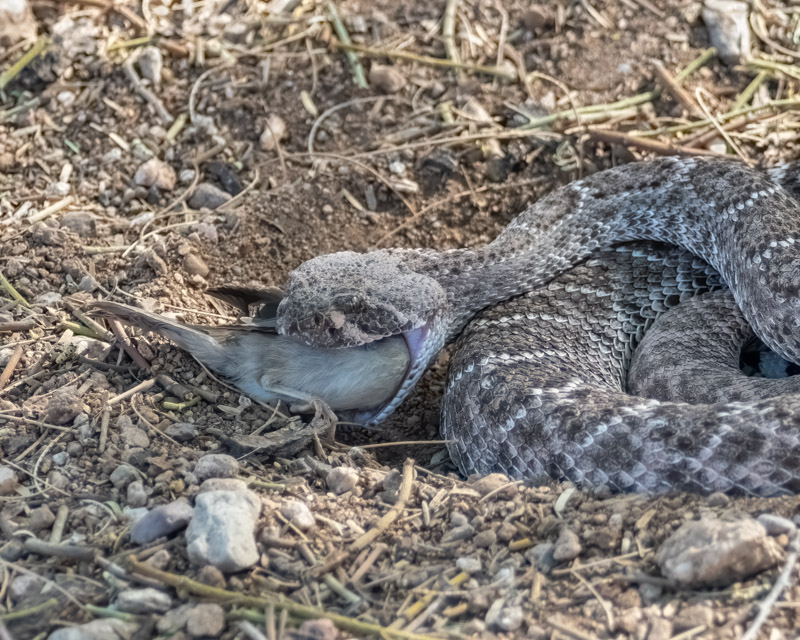
The Diamondback had captured and begun to swallow a bird. I believe this was a House Sparrow.
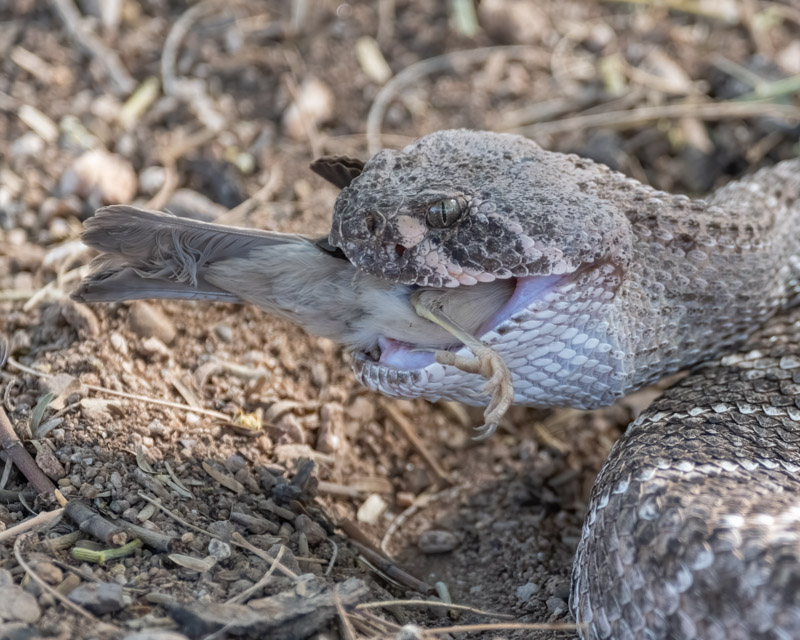
The Diamondback opened its jaws widely. It uses rows of tiny teeth along with its fangs to ‘walk’ the prey back down its throat. Muscles in its throat also help to move the prey along. You can see a big bulge in the snake’s neck right behind its head.
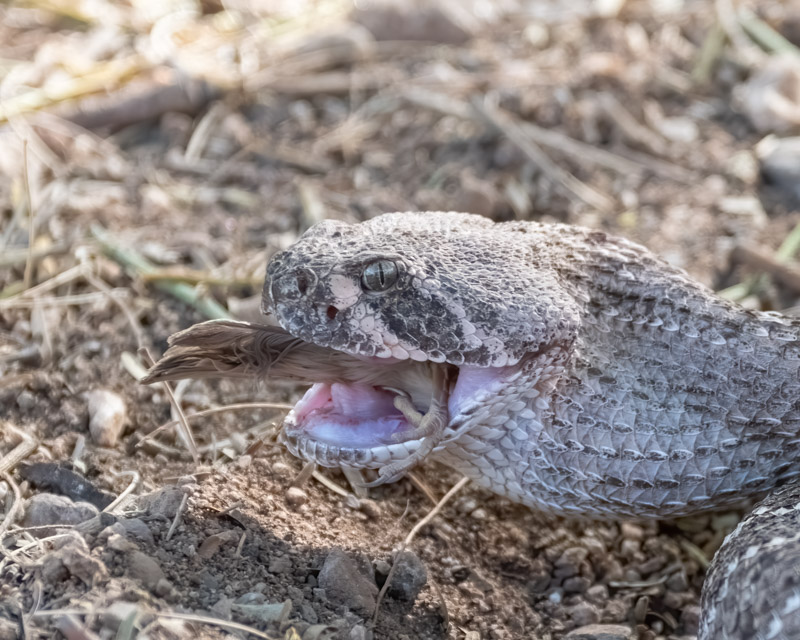
While it appears that the Diamondback has almost finished swallowing the bird, it continued a series of “swallows”. It would open its mouth wide and more of the bird would appear visible. Then the snake would work its jaws and muscles and the prey would slide a bit further in. Then it would repeat the actions, with the prey ever so slowly moving further into the snake.
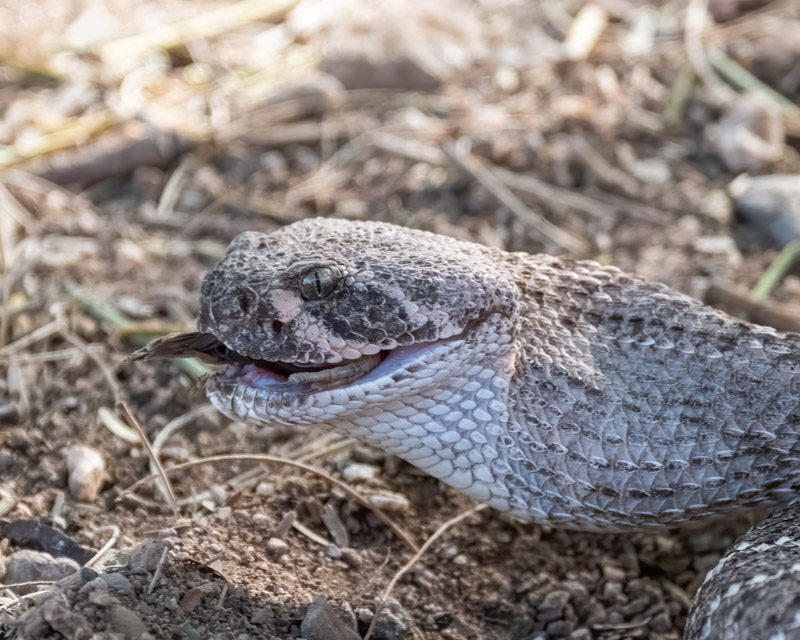
Even at this point, the snake opened its mouth wide for one last swallow. Still, it looks done here. For more on Diamondback Rattlesnakes, see the Desert Museum’s Fact Sheet: https://www.desertmuseum.org/kids/oz/long-fact-sheets/Diamondback%20Rattlesnake.php
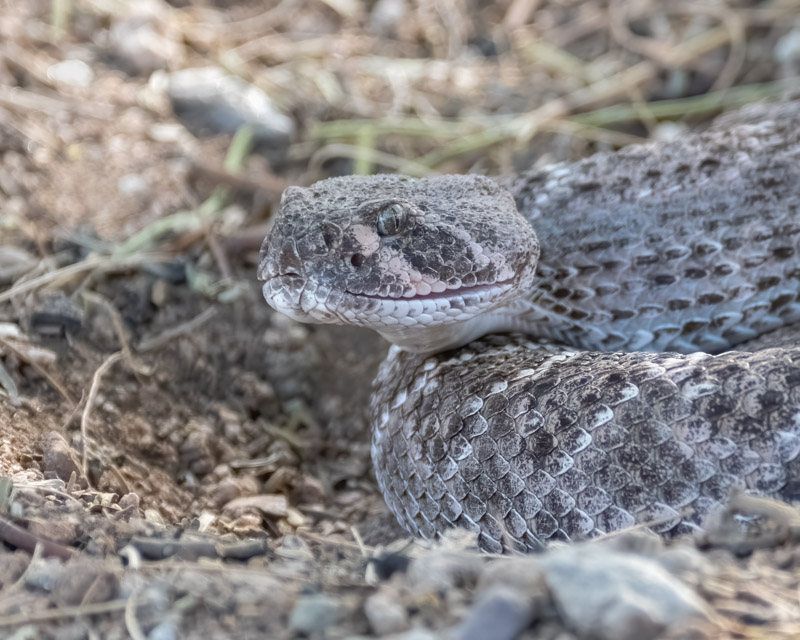
And then, after a very short rest, the Diamondback opened its mouth wide once more. The meal was no longer visible but the snake was readjusting its jaws and setting everything in place again before moving on. That hole at the bottom of the snake’s mouth is its glottis. That allows the snake to breath while its throat is full of prey during the swallowing task.
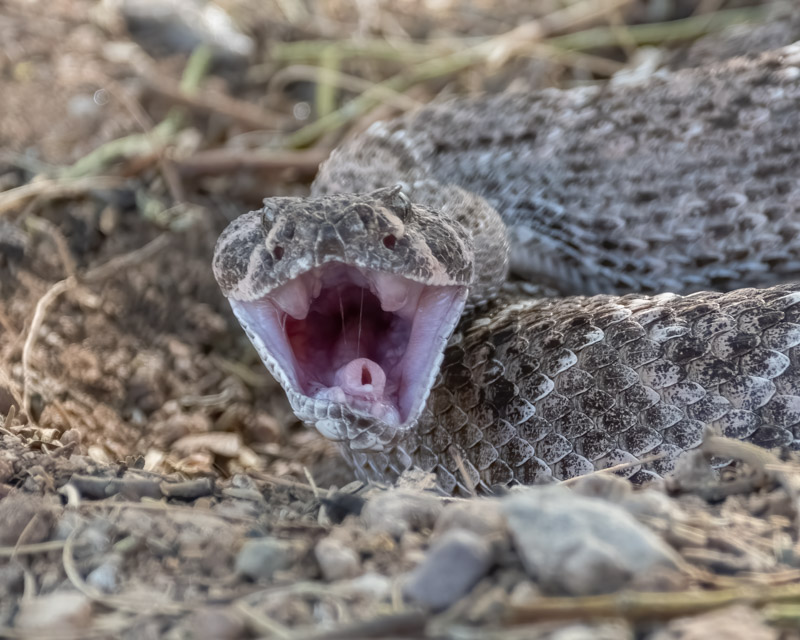
It took a very long three seconds for this very wide stretch to happen. I took many shots during this time because the view was stunning. Those long things hanging from the upper part of the snake’s mouth is a pair of upper teeth, used in grabbing and moving prey down the throat. The fangs are enclosed in their sheaths to the outside of those long teeth. With the food deeper in the snake the glottis opening is now closed. To either side of the glottis is a row of very tiny teeth that also help to grab and move food back.
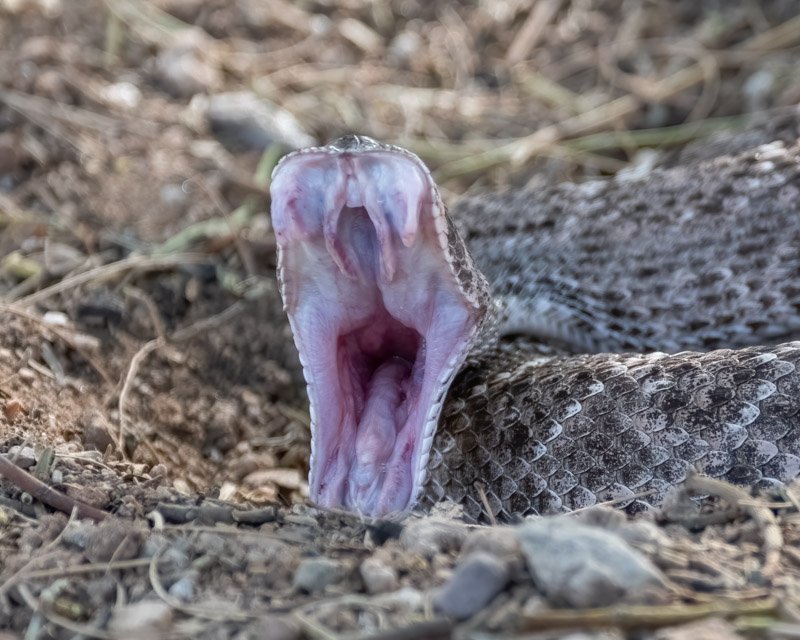
After getting everything in its place again, the Diamondback begins closing its mouth. The bulges from the fangs’ sheaths is what we see in the roof of the snake’s mouth.
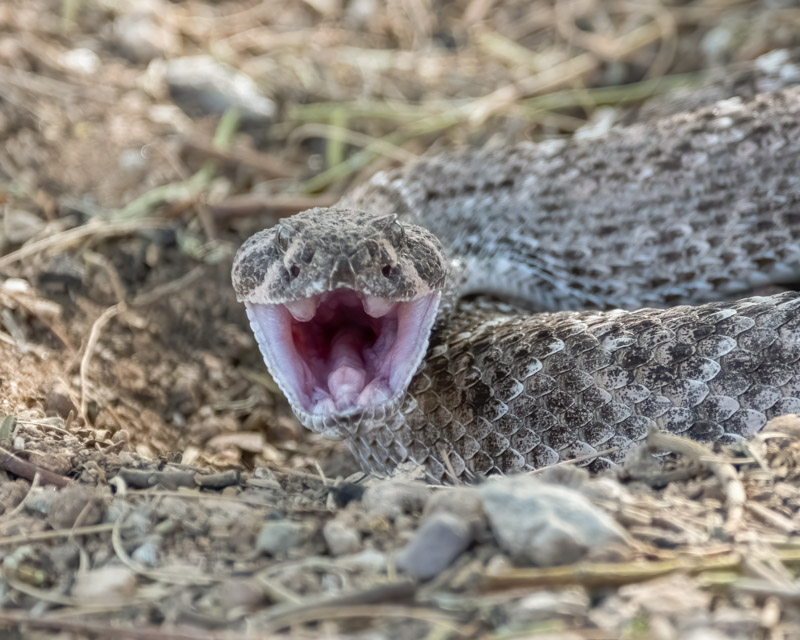
Now we can relax.
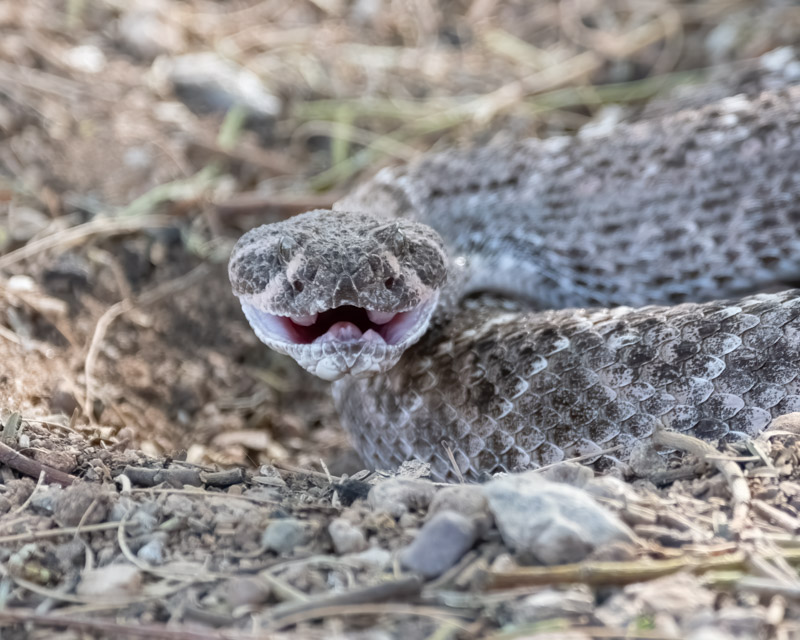
The Diamondback was ready to move on. I finally got a view of its rattles.
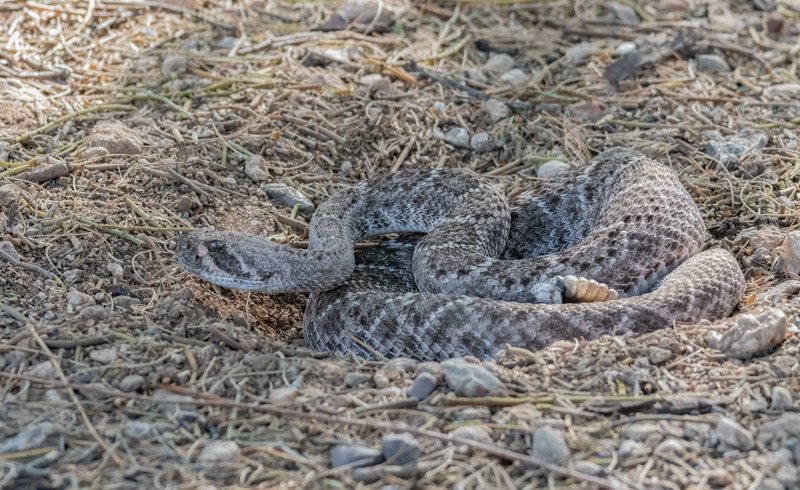
And it began ’snaking’ up and out of my yard. It seemed to be 3-4 feet long.
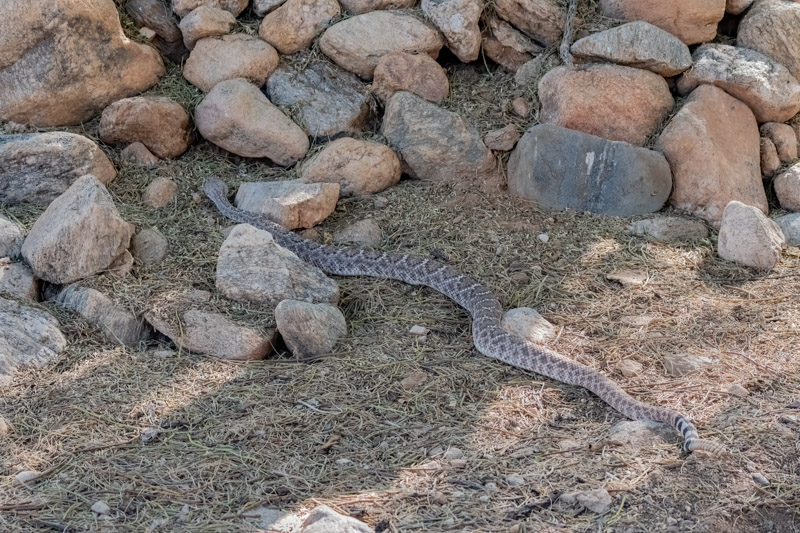
It is hard to decide just the right path out.
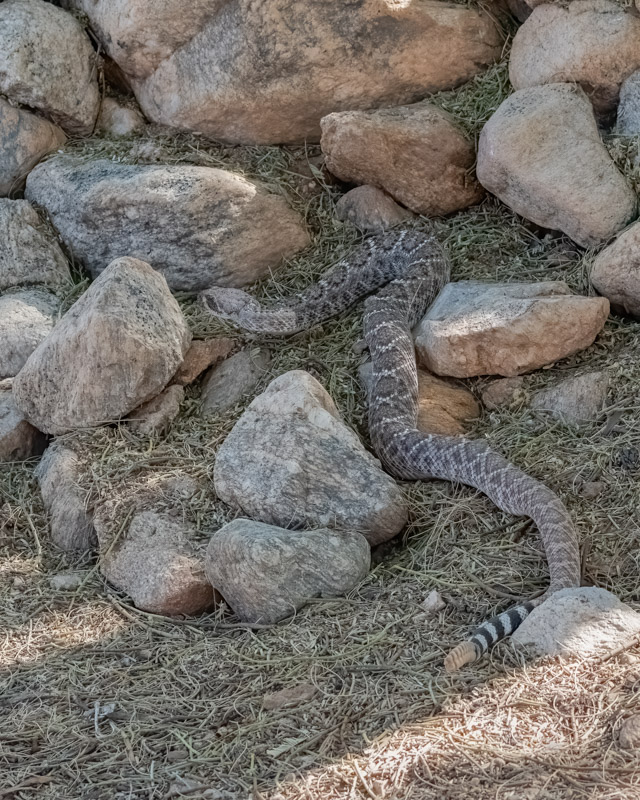
The Diamondback began moving faster. The sparrow was small enough that I could not see a bulge in the snake’s body to know where the meal was at this time.
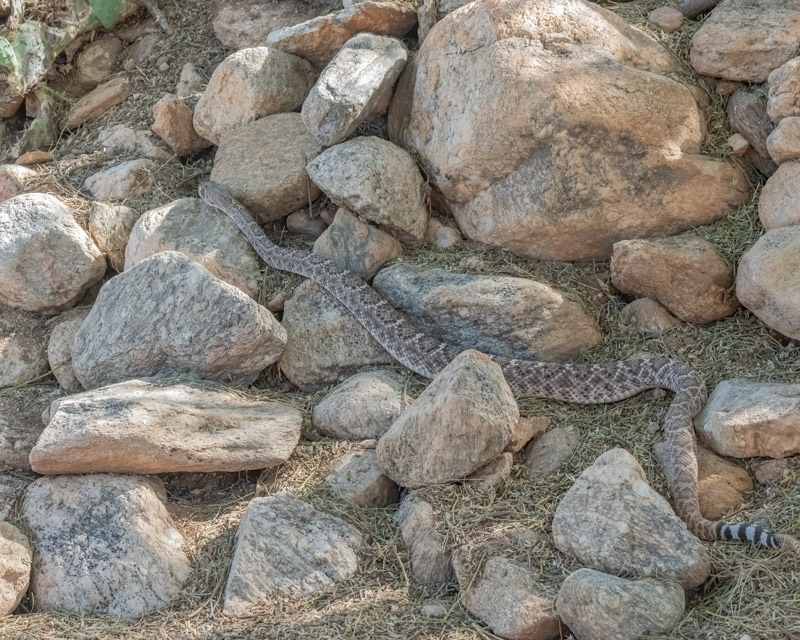
Into the desert, I knew the snake was about to disappear.
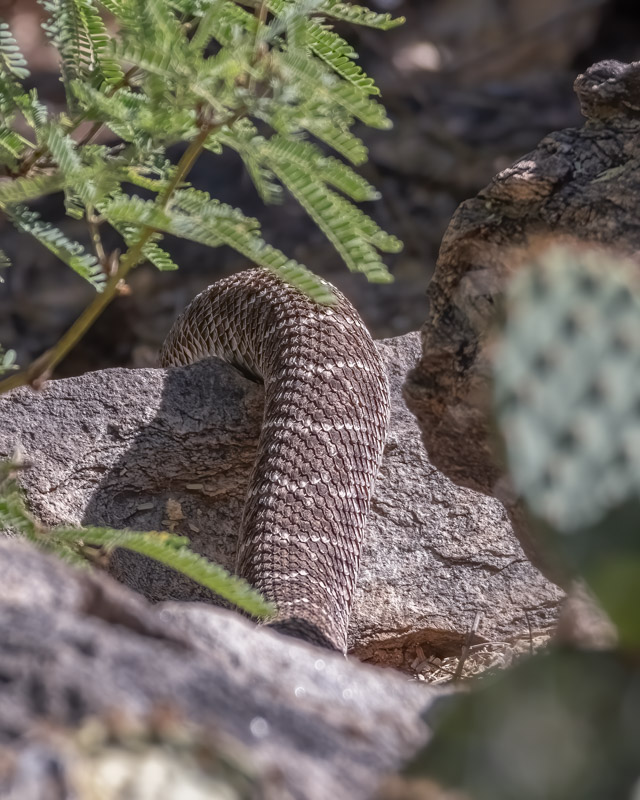
It is just about gone.
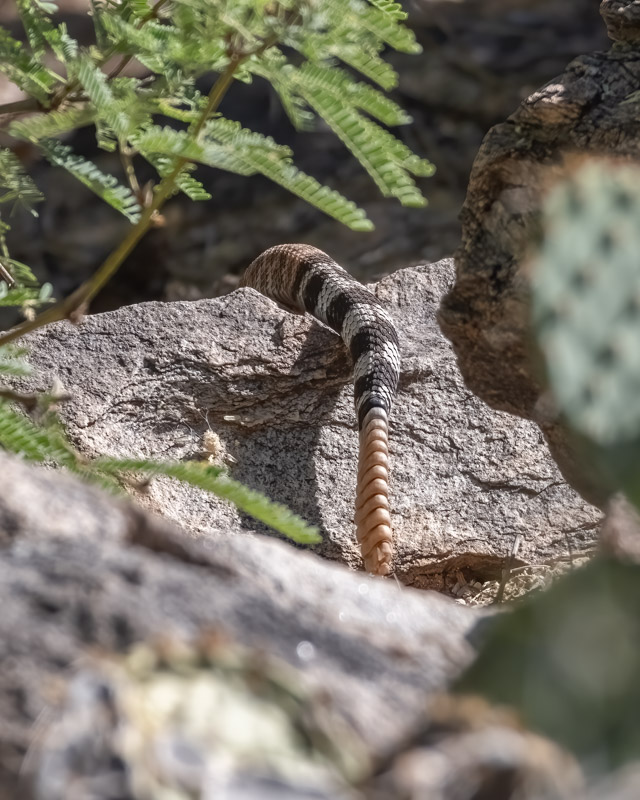
With one last wave, the Diamondback disappeared into the desert.
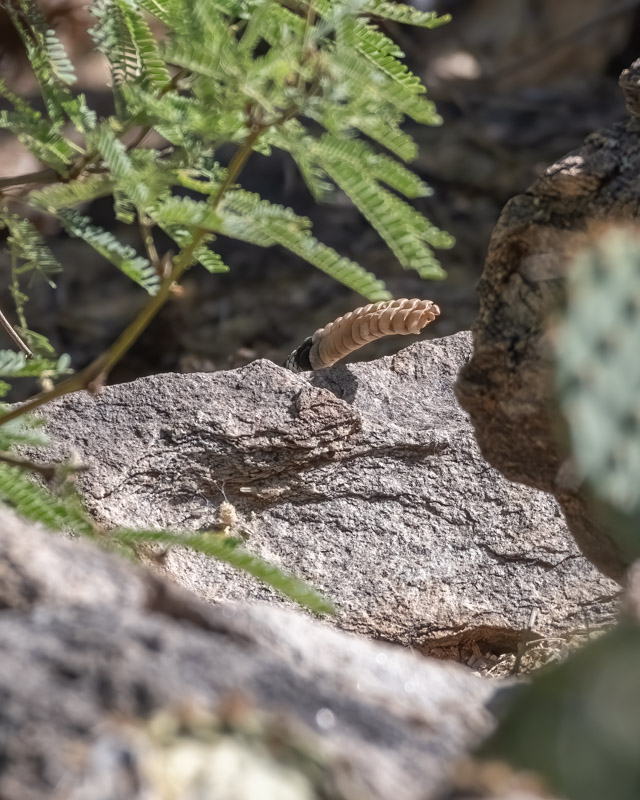
I hadn’t seen a rattlesnake in my yard since last fall and can’t remember the last time prior to that. I know they are around in the desert but they keep to themselves. Isn’t Mother Nature fascinating?
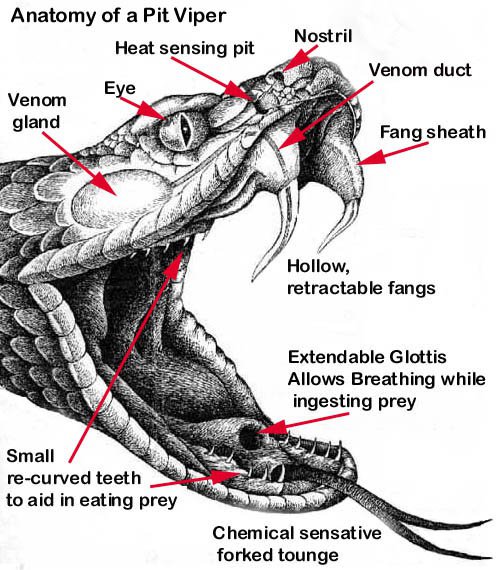
I sent my daughter a video of the snake to show to her kids. In response, my six year old grandson sent me a Father’s Day card with his drawing on it:
